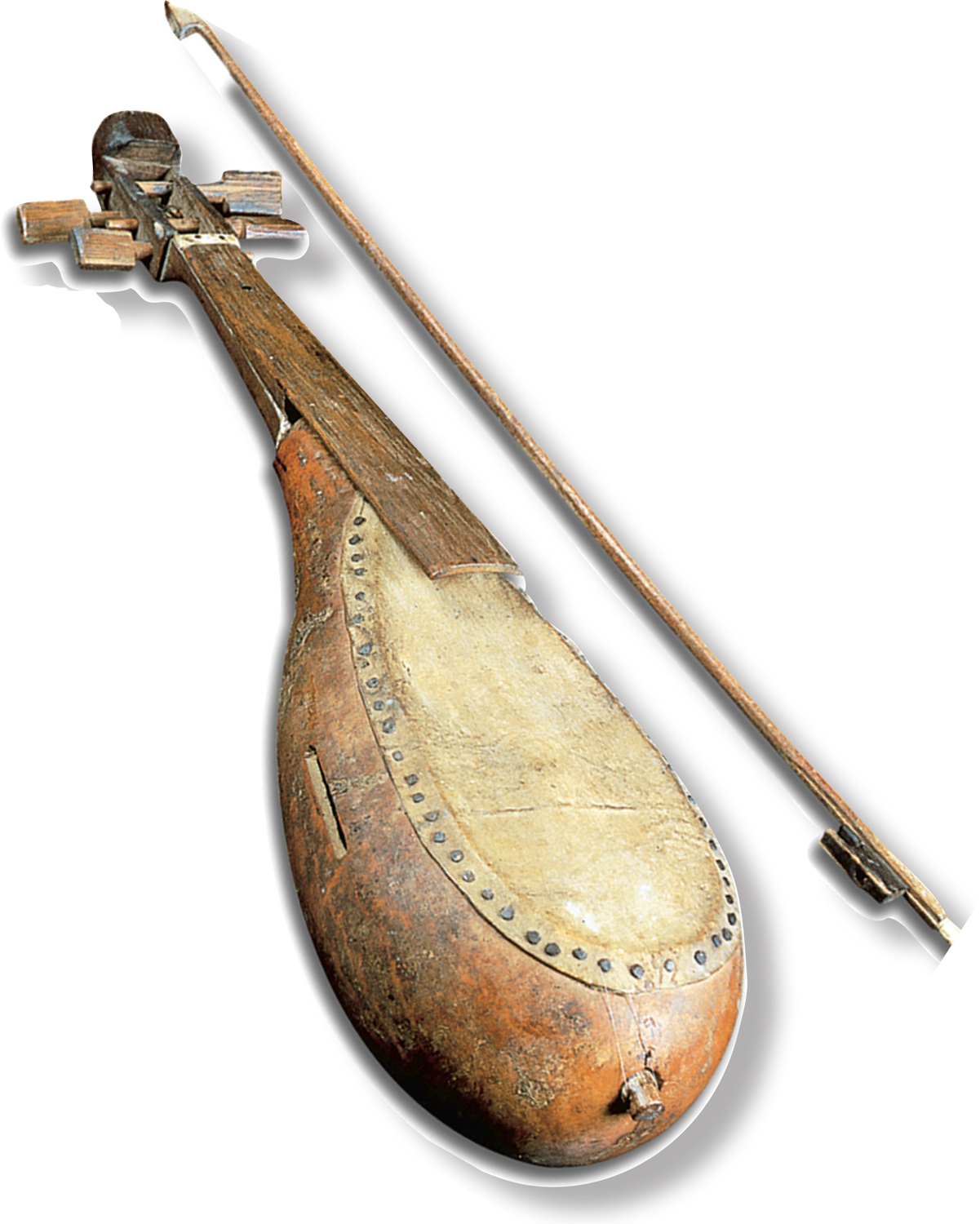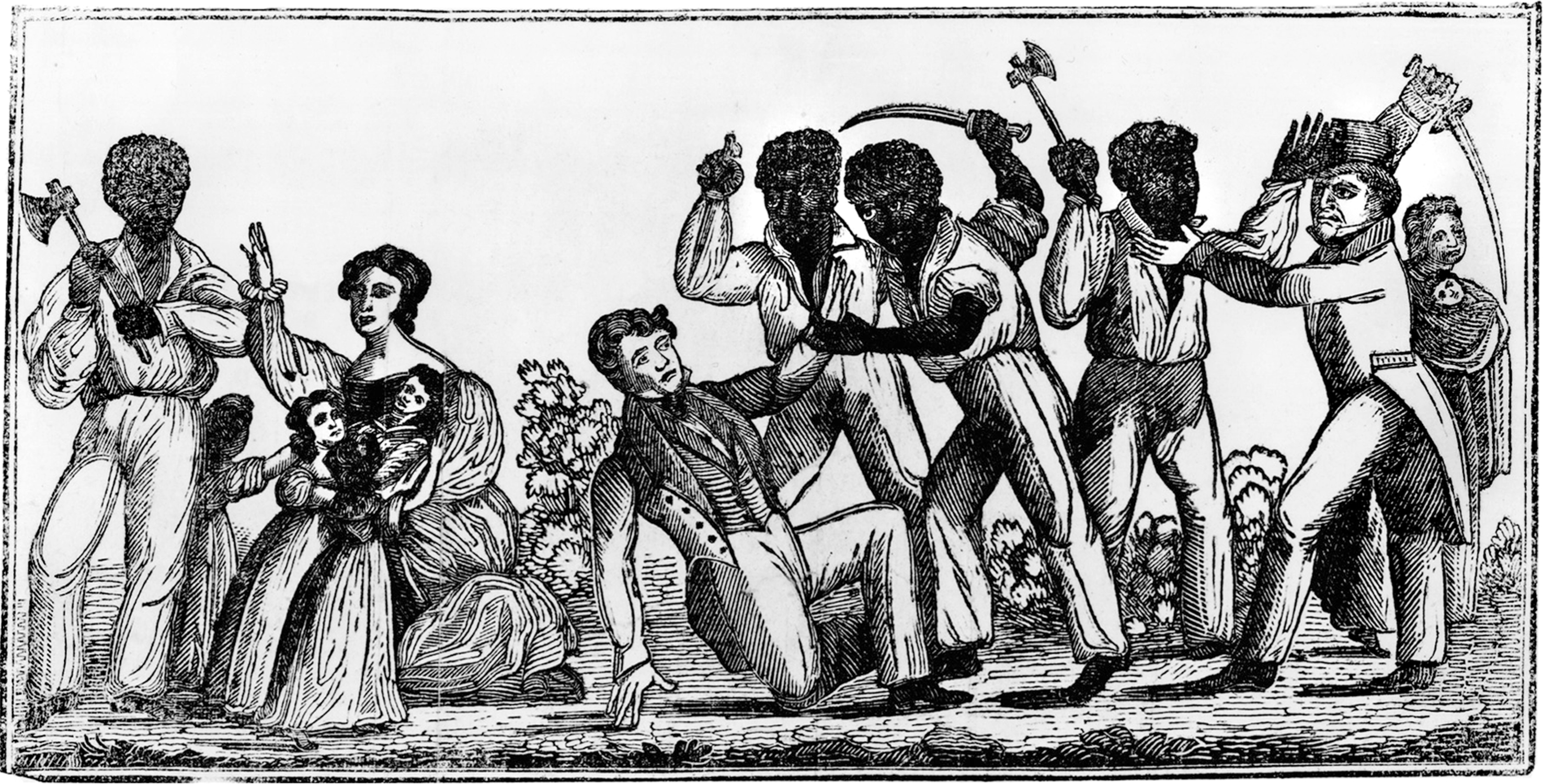The American Promise:
Printed Page 343
The American Promise Value
Edition: Printed Page 328
Chapter Chronology
Introduction for Chapter 13

GOURD FIDDLE Found in Maryland, this slave-made gourd fiddle is an example of the musical instruments that African Americans crafted and played throughout the South. Music provided slaves with a relief from the rigors of slavery. Smithsonian Institution Collections, National Museum of American History, Behring Center.
CONTENT LEARNING OBJECTIVES
After reading and studying this chapter, you should be able to:
- Identify the ways slavery, a plantation-based economy, and biracialism distinguished the antebellum South from the North.
- Explain how a plantation was physically organized, and describe the roles of the plantation master and mistress. Define the ideology of paternalism and its role on the plantation.
- Describe the lives led by slaves in the Old South and the elements that contributed to a semi-autonomous slave culture.
- Explain why free blacks posed an ideological dilemma for white Southerners and why their freedom was precarious.
- Identify the “plain folk” of the Old South.
- Explain how the South became both increasingly democratized during the second quarter of the nineteenth century and planters managed to retain their power.
NAT TURNER WAS BORN A SLAVE IN SOUTHAMPTON COUNTY, VIRGINIA, in October 1800. His parents noticed special marks on his body, which they said were signs that he was “intended for some great purpose.” His master said that he learned to read without being taught. As an adolescent, he adopted an austere lifestyle of Christian devotion and fasting. In his twenties, he received visits from the “Spirit,” the same spirit, he believed, that had spoken to the ancient prophets. In time, Nat Turner began to interpret these things to mean that God had appointed him an instrument of divine vengeance for the sin of slaveholding.
On the morning of August 22, 1831, he set out with six friends—Hark, Henry, Sam, Nelson, Will, and Jack—to punish slave owners. Turner struck the first blow, an ax to the head of his master, Joseph Travis. The rebels killed all of the white men, women, and children they encountered. By noon, they had visited eleven farms and slaughtered fifty-seven whites. Along the way, they had added fifty or sixty men to their army. Word spread quickly, and soon the militia and hundreds of local whites gathered. They quickly captured or killed all of the rebels except Turner, who hid out for about ten weeks before being captured in nearby woods. Within a week, he was tried, convicted, and executed. By then, forty-five slaves had stood trial, twenty had been convicted and hanged, and another ten had been banished from Virginia. Frenzied whites had killed another hundred or more blacks—insurgents and innocent bystanders—in their counterattack against the rebellion.
White Virginians blamed the rebellion on outside agitators. In 1829, David Walker, a freeborn black man living in Boston, had published his Appeal . . . to the Coloured Citizens of the World, an invitation to slaves to rise up in bloody revolution, and copies had fallen into the hands of Virginia slaves. Moreover, on January 1, 1831, the Massachusetts abolitionist William Lloyd Garrison had published the first issue of the Liberator, his fiery newspaper (see “Organizing against Slavery” in chapter 11).
In the months following the insurrection, the Virginia legislature reaffirmed the state’s determination to preserve slavery by passing laws that strengthened the institution and further restricted free blacks. A professor at the College of William and Mary, Thomas R. Dew, published a vigorous defense of slavery that became the bible of Southerners’ proslavery arguments. More than ever, the nation was divided along the Mason-Dixon line, the surveyors’ mark that in colonial times had established the boundary between Maryland and Pennsylvania but half a century later divided the free North and the slave South.
Black slavery increasingly molded the South into a distinctive region. In the decades after 1820, Southerners, like Northerners, raced westward; but unlike Northerners who spread small farms, manufacturing, and free labor, Southerners spread slavery, cotton, and plantations. Geographic expansion meant that slavery became more vigorous and more profitable than ever, embraced more people, and increased the South’s political power. Antebellum Southerners sometimes found themselves at odds with one another—not only slaves and free people but also women and men; Indians, Africans, and Europeans; and aristocrats and common folk. Nevertheless, beneath this diversity, a distinctively southern society and culture were forming. The South became a slave society, and most white Southerners were proud of it.

Horrid Massacre in Virginia No contemporary images of Nat Turner are known to exist. This woodcut simply imagines the rebellion as a nightmare in which black brutes took the lives of innocent whites. Although there was never another rebellion as large as Turner’s, images of black violence continued to haunt white imaginations. Library of Congress.
CHRONOLOGY
| 1808 |
- External slave trade outlawed.
|
| 1810s–1850s |
- Suffrage extended throughout South to all adult white males.
|
| 1820s–1830s |
- Southern legislatures enact slave codes.
- Southern legislatures restrict free blacks.
- Southern intellectuals fashion systematic defense of slavery.
|
| 1822 |
|
| 1829 |
- Appeal . . . to the Coloured Citizens of the World published.
|
| 1830 |
- Southern slaves number approximately two million.
|
| 1831 |
- Nat Turner’s rebellion.
- First issue of the Liberator published.
|
| 1836 |
- Arkansas admitted to Union as slave state.
|
| 1840 |
- Cotton accounts for more than 60 percent of nation’s exports.
|
| 1845 |
- Texas and Florida admitted to Union as slave states.
|
| 1860 |
- Southern slaves number nearly four million, one-third of South’s population.
|

